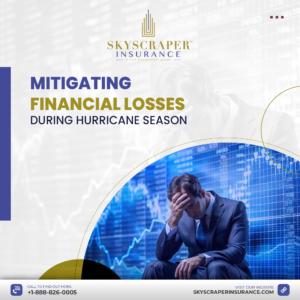Forecasts for a severe hurricane season add another considerable financial threat for homeowners in 2020.
It’s officially hurricane season, and this year is forecasted to experience severe levels of storm activity.
Aside from wind and precipitation, one of the biggest threats posed to properties by hurricanes is the storm surge that creates devastating inland flooding in affected areas.
Storm surge is defined as the abnormal rise in seawater level during a storm, measured as the height of the water above the normal predicted astronomical tide. The surge is primarily caused by a storm’s winds pushing water onshore.
New data from CoreLogic takes a closer look at storm surge risk for this year’s hurricane season, presenting their research findings in their recently released 2020 Storm Surge report.
Storm surge risk by Category and home type
For the 2020 report, CoreLogic researchers analyzed the national risk levels for single-family residences (SFR) and multifamily residences (MFR) in the U.S. at risk of storm surge.
In 2020, CoreLogic asserts approximately 7,110,779 SFRs and 252,657 MFRs are at risk of storm surge. The cost to rebuild a house from complete destruction, aka its “reconstruction cost value” (RCV), tops $1.7 trillion for SFRs and $95 billion for MFRs.
The findings, detailed in the chart below, represent the number of homes at potential risk (not the actual number affected by hurricane activity).
CoreLogic looked at the top 15 metropolitan areas with the greatest number of SFR and MFR homes at risk for storm surge. These areas account for 68.8% of the total RCV of storm surge risk in the United States in 2020.
The New York metropolitan area was found to have the greatest risk of storm surge, CoreLogic reports, with over 834,600 homes at risk and the highest total RCV at over $334 billion.
The Miami, Florida metro area that includes Miami, Fort Lauderdale and West Palm Beach, Florida follows the New York metro area with more than 834,500 homes at risk and an RCV of $166 billion, according to the report.
At a state level, Florida, Louisiana, New York and Texas have the greatest number of homes at risk of storm surge.
Disaster checklist: Preparing for floods and wildfires
Use these checklists to help insureds prepare for the wildfire and hurricane seasons.
Every year, insurance departments recommend the ways consumers can prepare for various disasters — they may suggest purchasing flood insurance in susceptible areas or offer ways to mitigate fire hazards, in addition to other tips. This year is different; the presence of COVID-19 makes any evacuation more complicated than normal.




